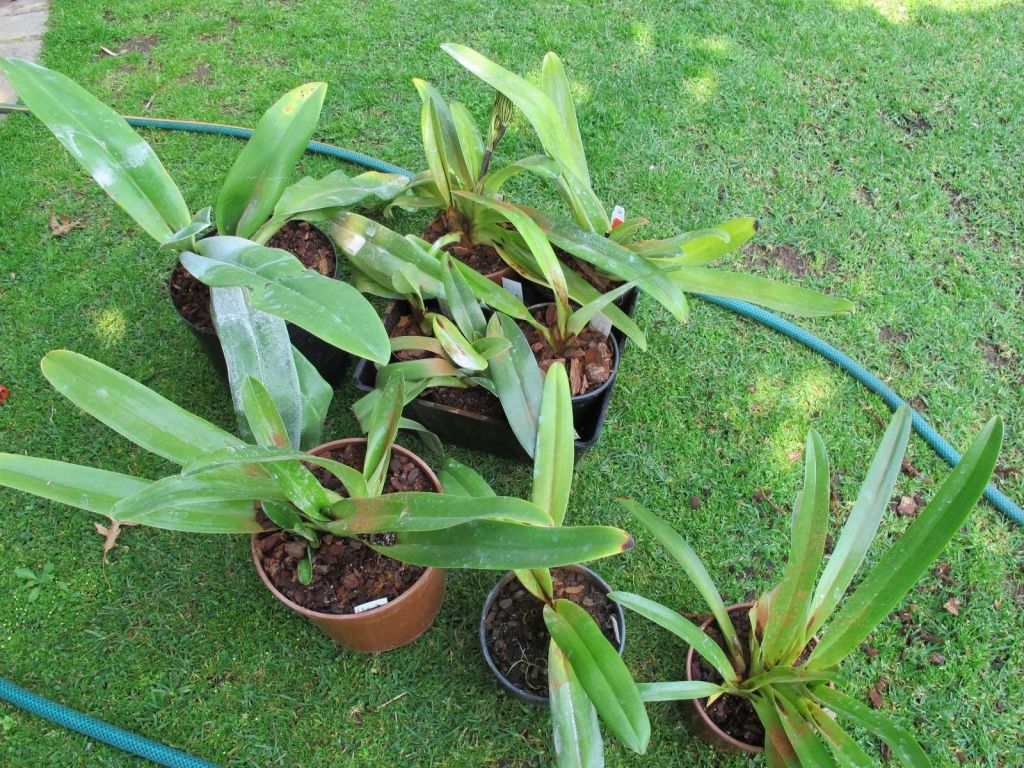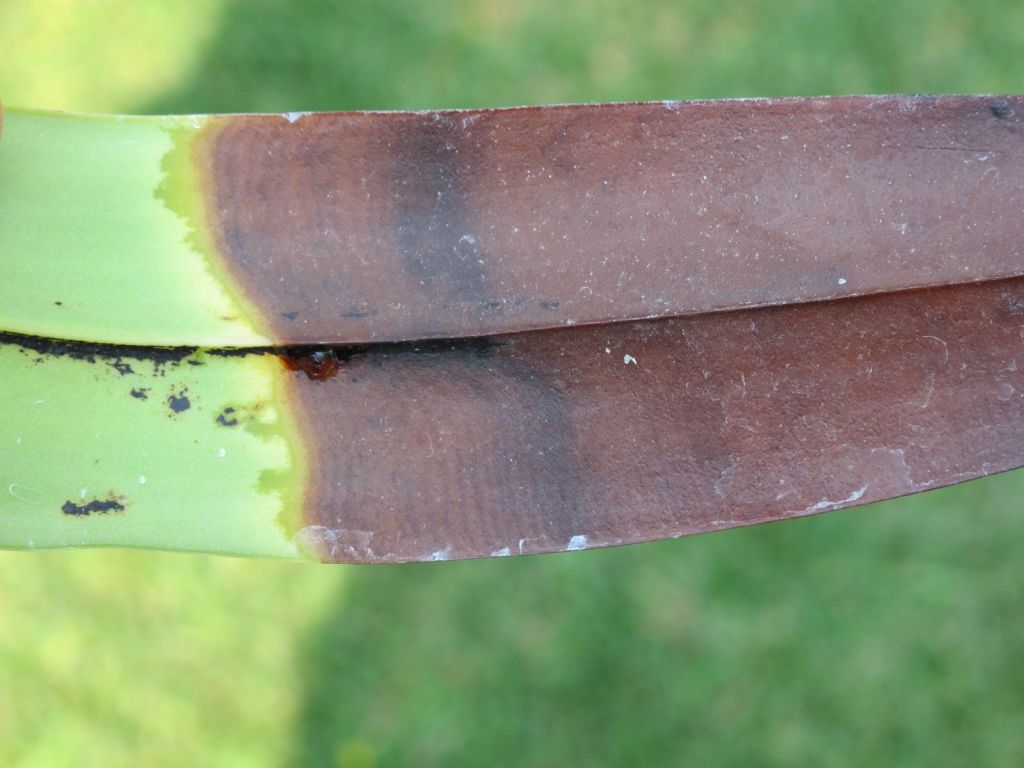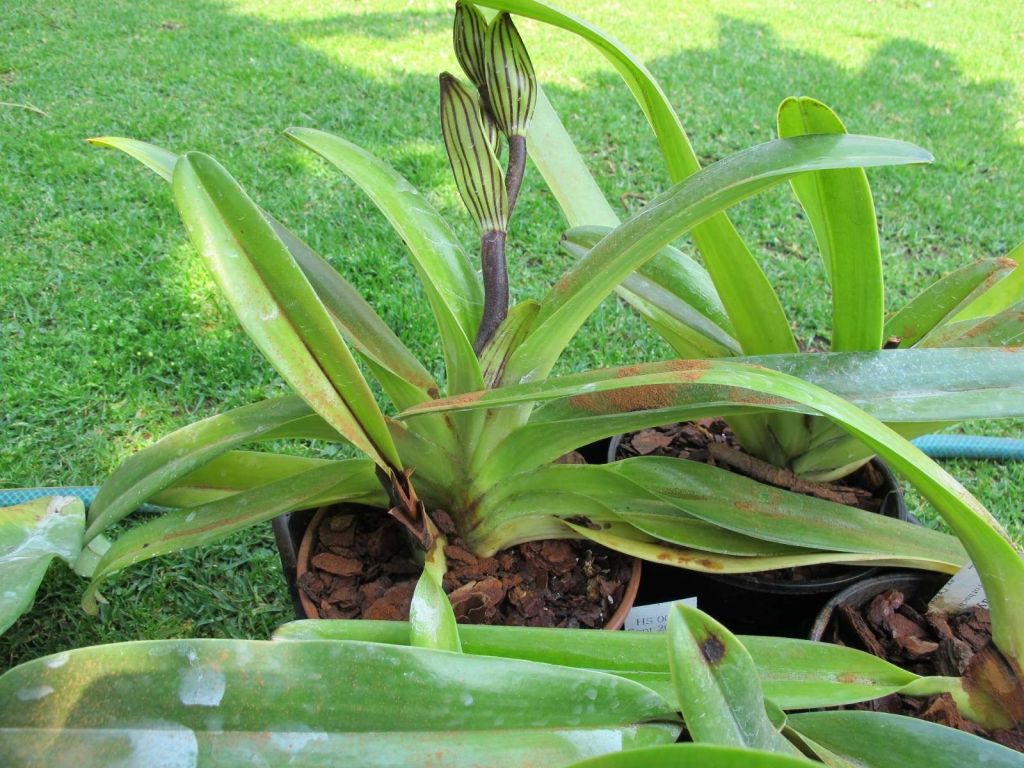Rick
Well-Known Member
I think that was good that you resurrected the topic of asprin Naoki. I've not experienced any conclusive help from it, but I wouldn't leave anything off the table.

 Uploaded with ImageShack.com
Uploaded with ImageShack.com Uploaded with ImageShack.com
Uploaded with ImageShack.com Uploaded with ImageShack.com
Uploaded with ImageShack.com










Something that is generally not characteristic of Erwinia is for the infection to start in the middle or end of a leaf. Generally it starts in an axial and works outward along the leaf (surgery is tough in this case).
The kolo leaf pictured and the smell you described sure looks like Erwinia, but weird to see it at the distal end of the leaf. At least that is easy to cut off without affecting the base of the plant.
If the plant is in bloom, pollinate a flower. I have NO IDEA why this works; but, whenever I've had a Paph with Erwinia that was in bloom, no matter how much of the plant that was lost, the rot stopped dead in it's tracks as soon as I pollinated one of the flowers.
This is an interesting observation. Perhaps when the plant begins to develop the fertilized seeds it translocates potassium from the leaf tissue to the developing seedpod. Or some other minerals get transferred that causes the leaf tissue to become unfavorable to the infecting pathogen.
..Or it starts producing something (a plant hormone) that increases the plant's immune system or that stunts the bacteria? Many possibles. There's definitely something going on like you and Lance suggest. The reason why I pollinated the liemianum flower in the first place was to try to get a green pod go far enough along to get viable seed embryos. However, to my astonishment, the rot stopped and the rhizome began to sprout new leaf fans....AND it carried the capsule to full term! And like I said, now I've got a nice plant again. Shocking! So, finding out that selfing a flower was a way to halt the rot, was a happy accident. I had given up on the mother plant and just thought I'd be lucky to get some seeds. However, because it worked with that plant, I deliberatley selfed the St. Swithin with the hopes that the rot would somehow be halted.....and it was! Now, I've got the seeds AND a plant well on it's way to a great comeback.
I had no trouble with dilute bleach and it did seem to slow the infectious agent provided I kept watering constantly. The issue is probably the dilution rate. Clearly, it was too strong for my plants. I was not happy with the "scientist" at Ag-Can!
Or it starts producing something (a plant hormone) that increases the plant's immune system or that stunts the bacteria? Many possibles.